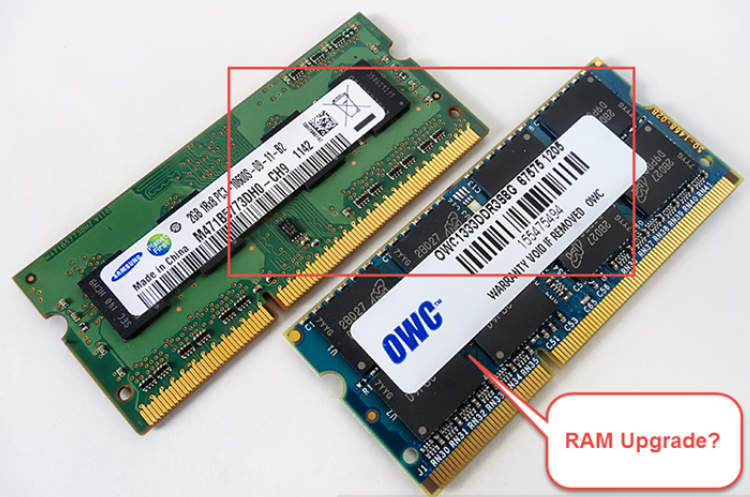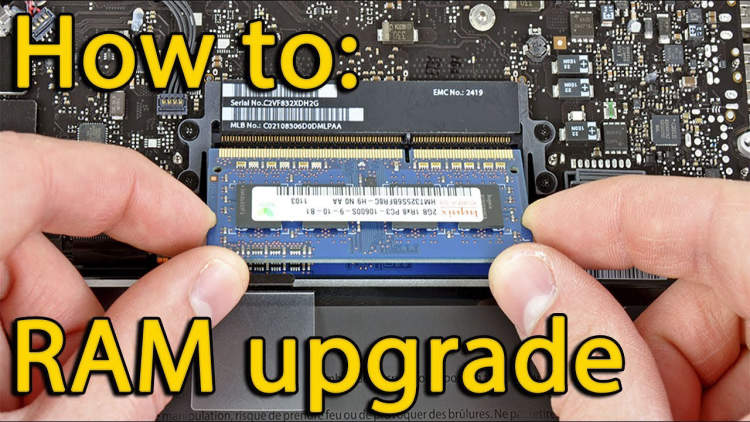Are you tired of your laptop slowing down whenever you have multiple applications open? Upgrading your laptop’s RAM might be the solution you’re looking for! In this article, we will guide you through the process of upgrading your laptop’s RAM, so you can enjoy faster performance and smoother multitasking.
Upgrading your laptop’s RAM can significantly improve its overall performance, allowing you to seamlessly run multiple applications, edit videos, or play games without any lag. With the right upgrades, you can transform your laptop into a powerhouse that can handle even the most demanding tasks. But where do you start? Don’t worry, we’ve got you covered. Follow these simple steps to upgrade your laptop’s RAM and give it a new lease on life.
The Importance of RAM in Laptop Performance
When it comes to understanding laptop performance, one of the key components that plays a crucial role is the RAM (Random Access Memory). RAM is a type of computer memory that allows data to be stored and accessed quickly.
1. Enhances Multitasking Capability
Having sufficient RAM in your laptop significantly improves its multitasking capability. With more RAM, your laptop can efficiently handle multiple programs and tasks simultaneously. This means you can have several applications running without experiencing a lag in performance.
2. Faster Data Processing Speed
In addition to multitasking, RAM also contributes to faster data processing speed. When you open a program or file, it gets loaded into the RAM, allowing for quick access to the data. The more RAM you have, the larger the amount of data that can be stored and accessed by the laptop’s processor, resulting in faster overall performance.
3. Improved Gaming Experience
If you are a gamer, having sufficient RAM is vital for a smooth gaming experience. Games today require substantial amounts of RAM to run optimally. Insufficient RAM can lead to lag, stuttering, and slower loading times during gameplay.
4. Enables Running Resource-Intensive Applications
Resource-intensive applications such as video editing software, graphic design tools, and virtual machine software require a significant amount of RAM to function smoothly. Insufficient RAM can result in these applications crashing or running slowly, hindering productivity. Upgrading the laptop’s RAM allows for a better experience when using such demanding applications.
5. Cost-Effective Upgrade
When it comes to upgrading a laptop’s performance, increasing RAM is one of the most cost-effective options. Compared to replacing the entire laptop or upgrading other components like the processor or graphics card, upgrading the RAM is relatively affordable and can have a noticeable impact on overall performance.
Overall, RAM plays a crucial role in enhancing laptop performance. By providing better multitasking capability, faster data processing speed, improved gaming experience, and the ability to run resource-intensive applications smoothly, upgrading your laptop’s RAM can greatly improve its overall performance.
Factors to consider before upgrading laptop RAM

When considering an upgrade to your laptop’s RAM, it’s important to take into account the following factors:
1. Compatibility:
Before purchasing a new RAM module, ensure that it is compatible with your laptop model. Check the laptop’s documentation or the manufacturer’s website for the supported RAM specifications.
2. Maximum RAM Capacity:
Determine the maximum amount of RAM your laptop can support. Some laptops have a limit on the amount of RAM that can be installed. Knowing this limit is crucial to avoid wasting money on a RAM upgrade that won’t be recognized by the system.
3. Existing RAM Configuration:
Take note of your laptop’s current RAM configuration. Check how many RAM slots are available and how many are already occupied. This information helps in selecting the right RAM module or deciding whether an upgrade is necessary.
4. RAM Type and Speed:
Identify the type of RAM (e.g., DDR3, DDR4) and the speed (e.g., 2400 MHz, 3200 MHz) supported by your laptop. It is essential to match these specifications when purchasing a new RAM module to ensure compatibility and optimal performance.
5. Budget:
Consider your budget for the RAM upgrade. RAM prices can vary significantly based on brand, capacity, and speed. Determine how much you are willing to spend and look for the best possible option within your budget.
6. Future Needs:
Anticipate your future needs when upgrading laptop RAM. If you plan to use resource-intensive applications or multitask heavily, it may be wise to invest in higher-capacity RAM now to avoid needing another upgrade in the near future.
By considering these factors, you can make an informed decision when upgrading your laptop’s RAM and ensure that you choose the right module for your needs.
Step-by-step guide to upgrading laptop RAM
Upgrading your laptop’s RAM can significantly improve its performance, allowing you to multitask seamlessly and run resource-intensive applications smoothly. If you’re unsure about how to upgrade your laptop’s RAM, follow this step-by-step guide:
1. Determine your laptop’s compatibility
Before you start, ensure that your laptop is upgradable and compatible with RAM upgrades. Check the manufacturer’s website or refer to the laptop’s user manual for detailed specifications.
2. Purchase the compatible RAM
Identify the type and maximum capacity of RAM supported by your laptop. Purchase the RAM module that meets these specifications from a reliable source.
3. Power off and disconnect your laptop
Before proceeding with the RAM upgrade, power off your laptop and disconnect any external peripherals. This ensures your safety and avoids potential damage to the internal components.
4. Locate the RAM compartment
Look for the RAM compartment on the bottom of your laptop. Refer to your user manual or manufacturer’s website for specific instructions on locating the compartment.
5. Open the RAM compartment
Remove the screws or fasteners securing the RAM compartment cover. Carefully open the cover to reveal the RAM slots. Take precautions to avoid electrostatic discharge by using an anti-static wristband or touching a grounded metal object.
6. Remove the old RAM module (if applicable)
If your laptop already has RAM installed in one or more slots, gently press the retaining clips on the sides of the module to release it. Carefully remove the module from the slot by pulling it straight out.
7. Install the new RAM module
Align the notches on the RAM module with the slot in the compartment. Insert the module at a slight angle, ensuring that it is securely seated. Apply firm and even pressure until you hear a click, indicating proper installation. Repeat this step for additional RAM modules if your laptop supports dual-channel memory.
8. Secure the RAM module(s)
Replace the RAM compartment cover and tighten the screws or fasteners to secure the module(s) in place. Ensure that the cover is properly aligned before tightening the screws.
9. Power on your laptop
After securing the RAM module(s), reconnect any disconnected peripherals and power on your laptop. It should detect the newly installed RAM automatically. If not, restart your laptop and access the BIOS to ensure that the RAM is recognized.
10. Verify the RAM upgrade
To confirm the successful RAM upgrade, check your laptop’s system information or use software tools like CPU-Z or Speccy to verify the increased RAM capacity.
With the new RAM installed, your laptop should now deliver improved performance and enhanced multitasking capabilities. Enjoy the benefits of a faster and more responsive computing experience!
Conclusion
Upgrading the RAM of your laptop can significantly improve its performance and enhance your overall computing experience. With a few simple steps, you can enjoy smoother multitasking, faster application launches, and better system responsiveness.
By following the guidelines discussed in this article, you can ensure a successful RAM upgrade. Remember to identify the compatible RAM type, check the maximum capacity supported by your laptop, and handle the components with care. Additionally, make sure to take necessary precautions such as backing up your data and shutting down your laptop properly before proceeding with the upgrade.

